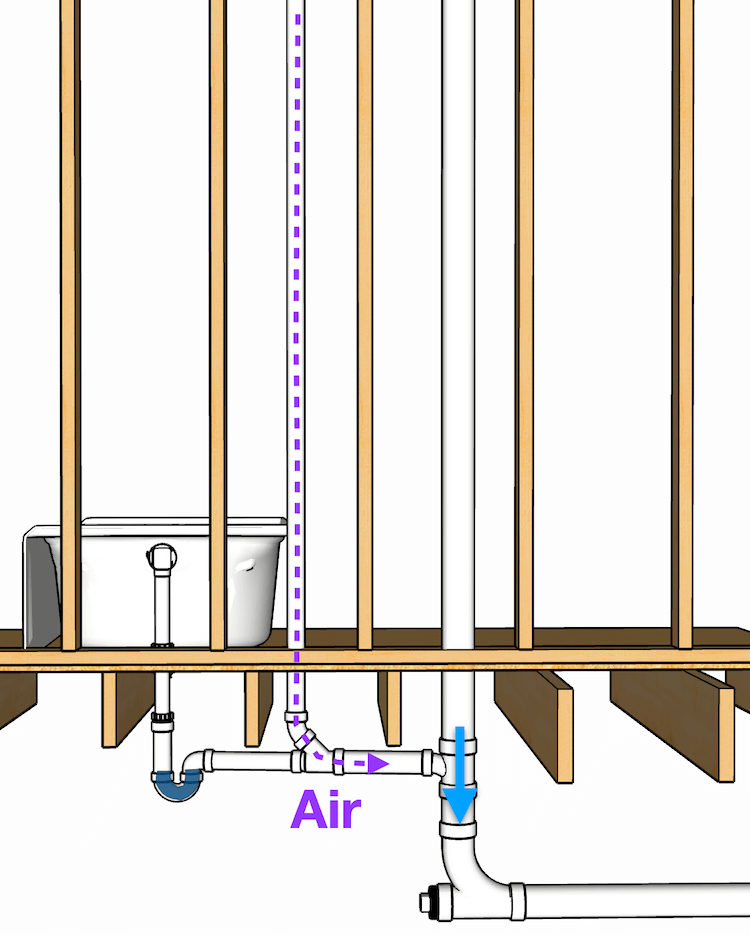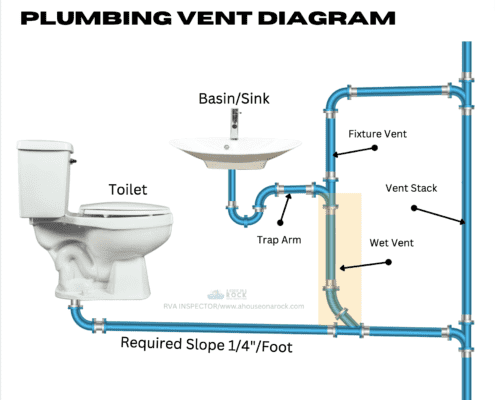What're your thoughts about The Upsides of Proper Ventilation in Plumbing Design?

Proper air flow in pipes systems is usually forgotten, yet it is vital for maintaining the performance and safety and security of your home's pipes. Air flow assists regulate air pressure, prevent the build-up of harmful gases, and make certain the reliable removal of waste. In this guide, we will discover the significance of appropriate plumbing ventilation, just how it functions, and the advantages it offers your pipes system.
Recognizing Ventilation in Pipes
Air flow in pipes describes the network of pipelines that enable air to flow through the drainage system. These vents serve several functions, including controling air pressure within the pipes, avoiding drain gases from getting in the home, and assisting in the smooth circulation of wastewater.
How Air Flow Functions in Pipes Equipments
Air Pressure Policy
Correct air flow preserves balanced air pressure within the plumbing system. When water moves through pipes, it displaces air. Without appropriate ventilation, this variation can create unfavorable pressure, causing slow drains or siphoning of water from catches, which can trigger unpleasant smells to seep right into the home.
Preventing Drain Gas Accumulation
One of the most essential features of plumbing vents is to avoid sewage system gases, such as methane and hydrogen sulfide, from accumulating within the home. These gases can posture severe health and wellness risks and are highly flammable. Vent pipes enable these gases to leave safely outside.
Helping in Waste Removal
Air flow aids in the effective removal of wastewater by avoiding airlocks in the drain system. When air can flow easily via the vents, it enables water and waste to stream efficiently via the pipes, minimizing the risk of obstructions and backups.
Sorts Of Plumbing Vents
Main Heap Vent
The major stack air vent, likewise called the air vent stack, is the key vent in a pipes system. It extends from the primary drainpipe align via the roofing system, allowing gases to get away and fresh air to get in the system.
Branch Vent
Branch vents attach to the primary pile air vent and offer private fixtures, such as sinks, bathrooms, and showers. These vents make sure that each fixture has ample air flow to work appropriately.
Air Admission Shutoff (AAV).
An Air Admittance Valve (AAV) is a one-way valve that permits air to get in the plumbing system without the need for a standard vent pipe expanding through the roofing. AAVs are frequently utilized in remodellings or locations where mounting a conventional air vent is unwise.
Signs of Poor Ventilation in Pipes.
Slow Draining Fixtures.
If your sinks, tubs, or bathrooms are draining slowly, it could be an indicator of bad ventilation. Poor air flow can create a vacuum cleaner impact, making it hard for water to drain pipes correctly.
Gurgling Seems.
Gurgling audios coming from drains are usually an outcome of air being drawn with water traps due to adverse stress in the pipes. This is a clear sign of insufficient air flow.
Unpleasant Smells.
Sewer smells inside your home are a red flag that your plumbing system is not appropriately aerated. This can indicate that sewer gases are not being properly vented outside, leading to possibly hazardous conditions.
Typical Ventilation Blunders.
Poor Vent Sizing.
Making use of small vent pipes can lead to inadequate air flow and stress imbalances in the system. It's essential to make use of vents that meet the details needs of your plumbing system.
Improper Vent Positioning.
Putting vents too much from the components they offer can lower their effectiveness. Appropriate positioning makes certain that air can stream openly and effectively via the system.
Ignoring Code Needs.
Building codes provide particular standards for plumbing ventilation. Overlooking these codes can cause a system that fails to operate correctly and may result in expensive repair services or carcinogen.
Benefits of Correct Air Flow.
Enhanced System Efficiency.
Properly ventilated pipes systems operate more successfully, with less obstructions, faster draining, and less stress on the pipelines. This efficiency extends the lifespan of the pipes system.
Improved Air Top Quality.
By preventing sewage system gases from entering your home, correct air flow contributes to better indoor air high quality, making your living environment healthier and extra comfy.
Preventing Water Damage.
Appropriate air flow aids prevent water from being siphoned out of catches, which can bring about drain gases entering the home and creating water damage gradually.
Steps to Make Certain Correct Ventilation.
Consulting Plumbing Codes.
Constantly get in touch with local plumbing codes when designing or changing your pipes system. These codes give the necessary guidelines for appropriate venting and ensure your system fulfills security requirements.
Regular Assessment and Upkeep.
Regular examinations can aid determine possible ventilation problems prior to they end up being significant troubles. Upkeep tasks, such as cleaning up air vent pipelines and looking for obstructions, are crucial for keeping the system in good working order.
Professional Installation.
For new installations or significant alterations, it's important to work with a professional plumbing professional. They have the competence to ensure the ventilation system is correctly designed and set up according to code.
Final thought.
Correct air flow is a critical element of any type of pipes system, making certain that it works effectively and securely. By recognizing the value of ventilation, recognizing the indicators of poor air flow, and taking actions to keep your system, you can protect against pricey problems and protect your home's air quality.
What is a Plumbing Vent and it's used for?All plumbing systems in residential and commercials construction have a plumbing vent. It doesn’t just vent unwanted odors from the drainage system to the outside; it actually serves an important purpose by supplying air to the system.
The plumbing drainage system is actually called a drainage, waste and vent (DWV) system. When water flows down the piping, an air supply (vent) is needed to allow the water to flow. Think of the vertical pipe as a drinking straw. If you plug the top end of a straw, liquid won’t drain from it.
The DWV system in your building consists of a series of pipes connected to each fixture; they extend above each fixture, and the system terminates at an open pipe that extends through the roof. This piping allows air into the system and prevents unbalanced pressures in the piping.
?The vent also prevents the system from drawing water out of a trap at the fixture with the characteristic “glug-glug-glug” as the drain gasps for air. Plumbing traps should drain smoothly and never “glug” or gasp for air.
If you have a drain that empties slowly or gurgles as it drains, this may indicate a venting problem. If you flush a toilet and the sink gurgles, there’s definitely a vent problem. It is good idea to have a Plumber check this.
https://www.ameliashomeinspection.com/blog/what-is-a-plumbing-vent-and-its-used-for

Hopefully you enjoyed our post about The Upsides of Proper Ventilation in Plumbing Design. Thanks a ton for spending some time to browse our piece of content. Appreciated our entry? Please quickly share it. Help somebody else find it. Many thanks for your time. Revisit us soon.
Rates